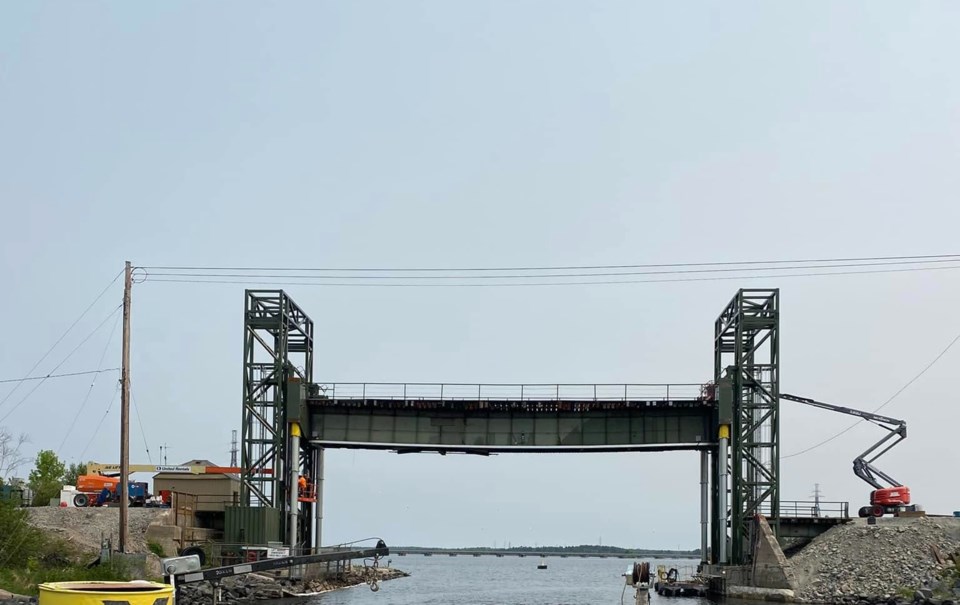FORT FRANCES — Federal transportation officials say they have taken “no enforcement action” against CN related to a collapsed lift bridge and the railway says it's continuing to investigate the cause.
The Five Mile Bridge on Rainy Lake on the CN line between Fort Frances and Thunder Bay was closed in August 2024 after it collapsed. CN received emergency approval the following month from the federal government for some temporary repairs to the crossing that allowed trains to use the bridge.
Larger ships, however, couldn’t use the waterway underneath until repairs to the lift system that raises the span over the water to a height that permits boats to pass were fully completed this year, with the bridge’s lift function returning to normal operations on June 1.
“Work to restore the bridge as a lift span occurred between April and June, and was executed in coordination with Transport Canada,” a CN spokesperson told Newswatch in an email.
In a follow-up email, CN said the cause of the initial collapse is still under review.
The affected span basically splits Rainy Lake in half, said Alan Boivin, the owner of Rainy Lake Boat Taxi, a ferrying service on the Canadian side of the lake. With the lift capabilities out, taller boats couldn’t fit underneath.
“I have one boat, my barge, that needs to use the bridge when heading to the north arm of Rainy Lake,” Boivin said. “Also, for everyone else who has a tall boat or a barge, house boats, (vessels) like that.”
In an email to Newswatch, Transport Canada said that, following the 2024 bridge collapse, it “initiated an inspection and formally requested information from” CN. Based on that, no enforcement actions were taken under the Railway Safety Act, the federal regulator said.
“Under the Railway Safety Act, federally-regulated railway companies are responsible for the maintenance and safety of their infrastructure,” a Transport Canada spokesperson said in an email. “CN therefore has obligation to routinely monitor for non-compliance and safety issues, which includes CN engineers performing inspections of their railway structures.”
“Transport Canada continues to monitor the railway’s compliance with the Railway Safety Act and associated regulations, rules, standards and guidelines,” the regulator said in a follow-up email.
It reiterated that all necessary work on the bridge, including the emergency repairs done shortly after the collapse and the subsequent fixing of the lift, was done in accordance with the Canadian Navigable Waters Act.
The Transportation Safety Board, the independent agency which investigates specific incidents in the air, marine, pipeline and rail sectors and issues recommendations aimed at furthering public safety, said it was notified about the bridge, but that, based on its initial findings, it didn’t investigate fully.
That’s because the situation didn’t meet the threshold for a full probe — namely that the collapse didn’t involve any rolling stock, like a locomotive, engine or “any car or railway equipment designed for movement on its wheels on the rails of a railway,” a spokesperson said in an email to Newswatch.
Boivin said he’s glad to see the bridge fully fixed.
“They did really good,” he said of the railway’s timeliness in completing repairs.
“I didn't expect them to have it done so quickly, and they did — they pulled it off for sure.”
